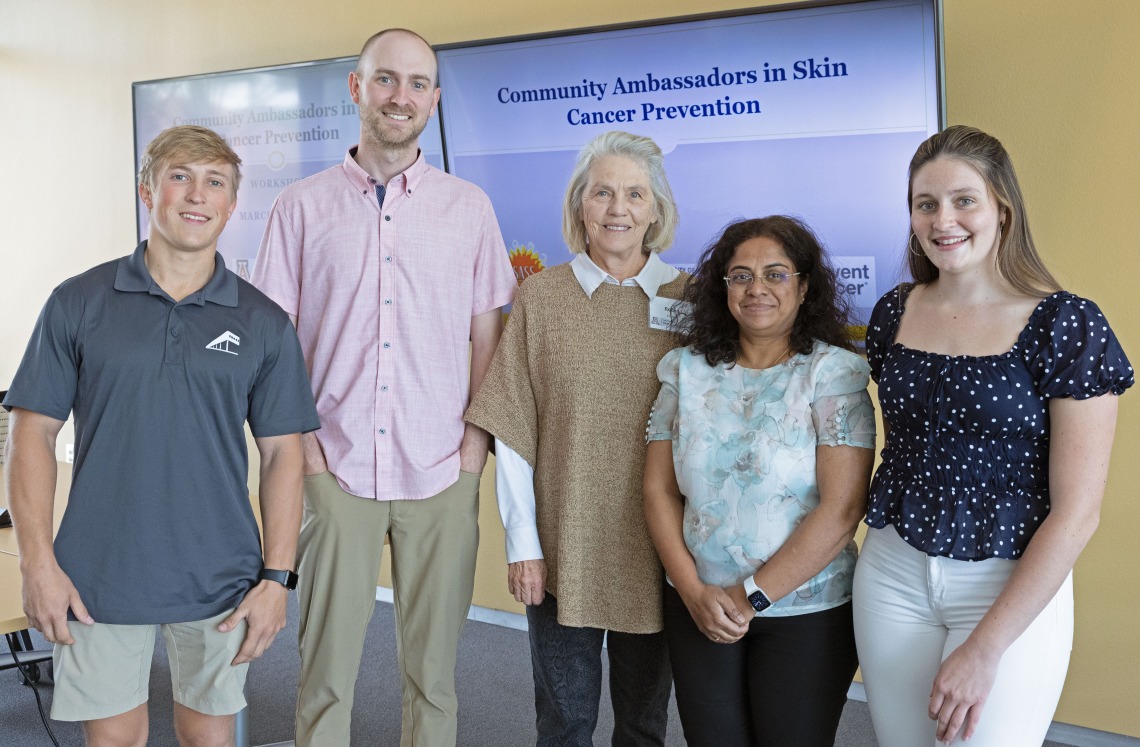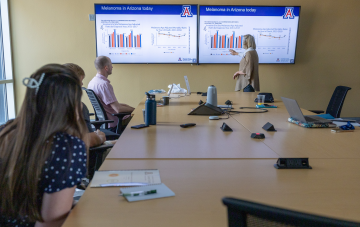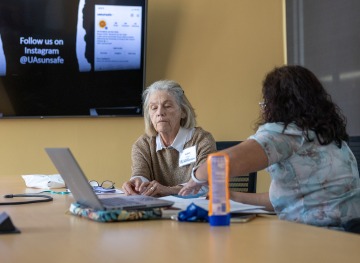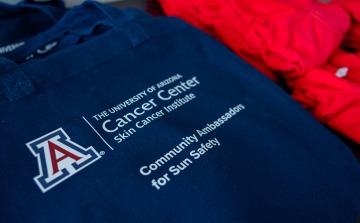Skin Cancer Institute trains new community ambassadors to teach sun safety


"We want to not only improve the quality of Tucson resident’s lives, but also to help ease the health burden of skin cancer by reducing the number of cases," Lisa Quale, University of Arizona Cancer Center Skin Cancer Institute senior health educator.
According to Quale, the institute has been working hard to educate the community about sun protection. To extend its educational reach, the institute introduced a new program––Community Ambassadors for Skin Cancer Prevention––expanding its team of dedicated sun safety specialists.
During the first workshop, participants received a comprehensive education on ultraviolet radiation exposure, skin cancer incidence, prevention strategies, communication challenges and leadership skills in skin health promotion.
“We plan to continue this work until sun safe behavior is the standard and skin cancer is not,” Quale said of the community ambassador trainings.
Spreading the Word

Inspired by the success of Project Students are Sun Safe (SASS), which annually trains 20 to 30 university students as peer educators to teach skin cancer prevention messages to middle school and high school students, the community ambassadors are the newest additions to the team.
Robin Harris, PhD MPH, is the Skin Cancer Institute co-director with Clara N. Curiel-Lewandrowski, MD, University of Arizona Cancer Center interim director of research, Skin Cancer Institute co-director, and professor and chief of the Division of Dermatology, Department of Medicine.
Dr. Harris says this program has been impactful, she looks forward to increasing its reach.
Last year, SASS trainees presented to 16 schools and 815 students in middle and high school. Unfortunately, the demand for these presentations exceeds the number of university students who were trained advocates.
“In the past, many community members have indicated an interest in assisting the SCI in our mission, so a skin cancer prevention ambassador program seemed like a great way to extend our reach deeper into the community,” Harris said.
Throughout the course, ambassadors are required to complete 20 hours of presentations or sign up for event attendance. The Skin Cancer Institute hosts a variety of events, including golf tournament fundraisers and hosting booths at various local community and University of Arizona events.
Dylan Miller, MPH, Skin Cancer Institute program coordinator, said program participants are also encouraged to create their own projects. Some examples of past student projects are modifying education content for a senior population, developing sun safety materials for patients with Parkinson’s Disease and creating a game for children to be used at community events.
During the workshop, the newest members of the outreach team were introduced to the fundamentals of sun safety, including common misconceptions about skin cancer prevention.
Miller said it is important for the ambassadors to educate the public on sunscreen effectiveness. Although there are sunscreens that are advertised as waterproof, they are only water-resistant; they will wash off with activities like swimming and should be reapplied afterward.
Dedicated to sun safety for all

Mona Srivastava, brings a unique perspective as a University of Arizona Cancer Center Clinical Trials Office research compliance coordinator also serving as a new community ambassador for the Skin Cancer Institute.
“I'm from India and I see a lot of Indian communities who say we are not at risk because our skin is brown,” said Srivastava.
Through her training, she learned that exposure to ultraviolet rays affects all skin types and programs like this are important to increase awareness and education.
Srivastava said she was motivated to become a community ambassador for the institute after participating in a melanoma trial led by Dr. Curiel.
“I got to see a patient’s cancerous cells get reduced to absolutely zero in just a few weeks,” said Srivastava. “I was amazed at how dramatically some of the patients recovered, and that inspired me [to get involved in the ambassador’s program].”
Skin cancer education through teamwork
To Quale, collaboration in outreach, patient care, research, and education are at the heart of the institute's mission of curing and preventing skin cancer.
Healthcare providers in dermatology offering sun safety messages in clinics and researchers conducting studies on new prevention and treatment methods are examples of how institute Staff members contribute to their mission.
“We all share the common goal of reducing skin cancer rates,” Quale said.
For more information, visit the Arizona Skin Cancer Institute.

